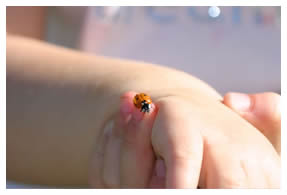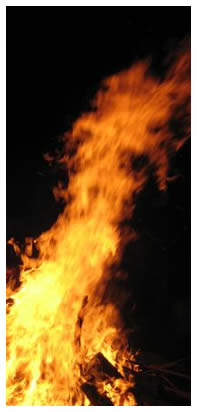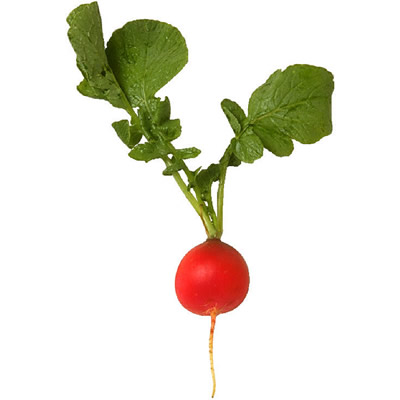
~~~~~~~~~~~~~~~~~~~~~~~~~~~~~~~~~~~~~~~~~~~
Live Earth Farm (Com)Post
32nd Harvest Week, Season 12
November 5th - 11th, 2007
~~~~~~~~~~~~~~~~~~~~~~~~~~~~~~~~~~~~~~~~~~~
In this issue
--From Farmer Tom: Living
with a new and exotic immigrant: LBAM
--CSA farm destroyed by Southern California fires
--Community Poetry
--Recommended Reading
--What's in the box this week
--Notes from Debbie's Kitchen
--Calendar
--Contact Information
" The purpose of poetry is to remind us how difficult
it is to remain just one person. "
~
Czeslaw Milosz, from ‘In Praise of the Fertile Land’
Greetings from Farmer Tom
~~~~~~~~~~~~~~~~~~~~~~~~~~~~~~~~~~~~~~~~~~~~~~~~
Living with a new and exotic immigrant: LBAM
Once not too long ago, we were made believe that DDT would safely eliminate Codling Moths in our apple orchards; now we know the many lethal side effects this ‘silver bullet’ approach to controlling nature had, and most likely still has, today. Nobody likes to be sprayed on, no matter what the product or intent, especially if information is incomplete and community involvement is rushed and bypassed. It is warranted to question and oppose authorities who try to eradicate an insect using emergency powers and avoiding more socially acceptable control methods.
I would favor the recommended use of pheromones to manage the Light Brown Apple Moth (LBAM), since I am familiar with using pheromones myself in our apple and pear orchards to control the mating of Codling Moths. However, we don't spray and inhale the pheromones and the potentially toxic medium it is contained in for aerial spraying; we only use traps and twist-ties placed in the trees. I am completely opposed to these pheromones being sprayed over a large urban population, without understanding the impact and efficaciousness of this approach. As a farmer, my intent in controlling an insect is to minimize their damage to our crops, knowing full well that with any living organism, whether an exotic new arrival such as LBAM or a more established one such as the Codling Moth, all I am trying to achieve is a favorable coexistence. To take a stance of wanting to fully eradicate a living organism, at whatever cost, is an approach conceived in arrogance where the underlying premise is based on a philosophy that nature exists for the convenience of man alone. Such a narrow view of nature, coupled with the power of special business and government interests creates a general sense of fear and mistrust.
I like what Pesticide Action Network, a non-profit group based in San Francisco, required before any spraying takes place:
1. Scientific evidence documenting how and why aerial application of the pheromone is expected to be efficacious.
2. Epidemiological or occupational health studies of effects of aerial pheromone releases in Australia where the moth is originally from. In the absence of such studies, independent assessment of public health/epidemiological literature and of the illness reports from the Monterey aerial releases.
3. Findings from a recently initiated UC Davis research project on local environmental impacts from the Monterey aerial releases.
4. Public presentations of all the studies and a comparative assessment of the relative risks and efficacy of the range of least toxic alternatives available for LBAM control.
5. Establishment of a broad based Environmental Justice-type committee, consisting of local community members, growers (organic and conventional), local conservationists, environmental groups and independent experts in entomology, toxicology and public health, to collaborate in finding efficacious and ecologically and socially acceptable solutions to LBAM control.
 I
am sure that by abandoning our attitude of human superiority we can learn how
to share this earth with other creatures and, using our imagination and creativity,
do so peacefully and cooperatively. – Tom
I
am sure that by abandoning our attitude of human superiority we can learn how
to share this earth with other creatures and, using our imagination and creativity,
do so peacefully and cooperatively. – Tom <back to top>
CSA farm destroyed by Southern California Fires
~~~~~~~~~~~~~~~~~~~~~~~~~~~~~~~~~~~~~~~~~~~~~~~~
 Although
we strive to live in harmony with nature, there is little opportunity
to coexist when faced with the raw and destructive forces that bore down on
Southern California during last week's fires. While I was writing last week's
newsletter about how we are just temporary stewards of the land, I got a call
from Julia Wiley of Mariquita Farm who informed me that Bill Brammer, a longtime
CSA farmer in San Diego, lost his farm to the fires. Bill and his family got
away with their lives but most of the buildings and many of the crops were
destroyed. Live Earth Farm is sending a donation to support their farm workers
during these difficult times, and we encourage anyone who wants to do the same
to please read the following note from Julia to find out how to do so:
Although
we strive to live in harmony with nature, there is little opportunity
to coexist when faced with the raw and destructive forces that bore down on
Southern California during last week's fires. While I was writing last week's
newsletter about how we are just temporary stewards of the land, I got a call
from Julia Wiley of Mariquita Farm who informed me that Bill Brammer, a longtime
CSA farmer in San Diego, lost his farm to the fires. Bill and his family got
away with their lives but most of the buildings and many of the crops were
destroyed. Live Earth Farm is sending a donation to support their farm workers
during these difficult times, and we encourage anyone who wants to do the same
to please read the following note from Julia to find out how to do so:
“A long-time San Diego farmer lost their home and a large part of their
farmland went up in the flames from the wildfires. We are collaborating with
a couple other local CSA farms and taking donations. If interested, please mail
a check noting the monies to go towards the Be Wise Farm
donation. Mail
checks payable to Two Small Farms to our PO Box 2065, Watsonville, CA 95077. Notice:
this is not tax deductible; it's just you trusting us we'll get every penny to
their workers, with no strings attached. We're certain there are great non-profits
doing great work where your donations can be claimed on taxes such as Habitat
for Humanity and the Red Cross.” - Julia
For further details on their story:
http://www.voiceofsandiego.org/articles/2007/10/26/this_just_in/798bewise102507.txt
and http://www.bewiseranch.com/
<back to top>
Community Poetry
~~~~~~~~~~~~~~~~~~~~~~~~~~~~~~~~~~~~~~~~~~~~~~~~
My good friend and CSA member Miriam Goldberg sent me a poem which I am glad
she agreed to share with the rest of the Farm community. Sometimes it is the
simple things in life, like the little red radish in the bottom of your share,
which warms the heart. This poem might inspire others to share their creative
and artistic insights. Just like sharing food, poems and stories are acts of
community and interdependence. We can read them to each other aloud at the kitchen
table, talk about and savor them. Thanks Miriam! - Tom
 I like my radish . . .
I like my radish . . .
I like my radish sweet
juicy, cool
translucent
so that when I bite
through its
smooth red hide
the snap
fills my head
like a fire cracker
and echoes
in crunches splashing
against my palate.
Held to the sun
its flesh glistens
a glacial luminescence
webbed with
white hot threads
which thin near
the cherry coating,
that magenta orange glow
with delicate
red veins.
Is this
what the heart
really looks like?
Or is this the heart
of a farmer’s dream,
nourishing the
whole
world?
M. Goldberg
11/4/2007
<back to top>
Recommended Reading
~~~~~~~~~~~~~~~~~~~~~~~~~~~~~~~~~~~~~~~~~~~~~~~~
Hi, Debbie here -- I know I’ve been a big pusher of Michael Pollan’s
book “The
Omnivore’s Dilemma” (and if you haven’t read it yet, you must!
It’s great!!), but now I have a new book to recommend: “Animal, Vegetable,
Miracle” by Barbara Kingsolver. If you haven’t read any of her work,
you have missed out. Her writing is absolutely wonderful, and this is no
exception! It is, on the surface, a story of her choosing to feed her family
for a year as completely as possible from only local ingredients – mostly
what she grows and raises herself, but also from nearby farms and farmers; from
within her community, that is. Overall it is much more than just that story,
with sidebars by her husband, Stephen Hopp, on timely, related topics, and recipes
and cooking insights at the end of each chapter by her daughter Camille. Here’s
their website, if you’re curious, then if you want to read it, get a copy
from your local bookstore or library. I promise you, you won't be sorry!
www.animalvegetablemiracle.com
<back to top>
What's in the box this week
~~~~~~~~~~~~~~~~~~~~~~~~~~~~~~~~~~~~~~~~~~~~~~~~
Content differences between Family and Small
Shares are in red; items with a “+” in
Family Shares are more in quantity than in Small; anticipated quantities, if
any, are in parentheses. Occasionally the content will differ from this list
(i.e. we will make a substitution), but we do our best to give you an accurate
projection.
Family Share:
Broccoli +
Brussel sprouts
Cabbage
Chantenay carrots
Collard greens
Chard or kale
Garlic (2)
Lettuce +
Peppers (Lakeside)
Winter squash: sweet dumpling, butternut, and/or Kabocha or acorn
Apples
Pears
Small Share:
Avocados (Marsalisi Farm)
Brussel sprouts
Broccoli
Chantenay carrots
Chard
Garlic (1)
Collard greens
Lettuce
Peppers (Lakeside)
Winter squash: sweet dumpling, butternut, and/or Kabocha or acorn
Apples
Extra Fruit Option:
Strawberries, apples and pears
<back to top>
Notes from Debbie's Kitchen
~~~~~~~~~~~~~~~~~~~~~~~~~~~~~~~~~~~~~~~~~~~~~~~~
Click
here to go to the
recipe database. Includes 10 years of CSA recipes and is alphabetized
by key ingredient. Also includes photos of most veggies; helpful
for ID-ing things in your box!
Hard to believe that the CSA season is nearly at its end! Only one more week
to go after this one. This week, member Laurel Pavesi shares her insights and
inspirations for ‘cooking within the box.’ A few other folks sent
in some timely recipes too, so I’ll include them after Laurel’s.
- Debbie
What I’d do with my box this week
by Laurel Pavesi
Well I’m a newbie – an enthusiastic newbie. At the beginning
of the season I was overwhelmed – now I’m more in the swing of things.
I’m still on a steep learning curve though, so I use the “swap” box
a lot. I check my sack of goodies each week to see if there is something
I might not use, and “donate” it to the swap box. Last week
I had the satisfaction of seeing another member pick up my ‘donations’ right
away! In this week’s box I’ll donate my kale, and if there are extra
carrots I’ll pick some up for my favorite carrot cake recipe.
I’ve received so many compliments on this carrot cake recipe. I’m
convinced it’s Tom’s delicious carrots that make the difference! I
use my food processor to grate the carrots so it’s not so much work. I’ve
even frozen this cake successfully. I freeze it first without wrapping
it, and once the icing is frozen hard I wrap it in freezer wrap or a bag. I
remove the freezer wrap before I thaw it and the icing still looks great!
Brown Sugar Carrot Cake
Mix together:
2 C flour (10 oz.)
2 C brown sugar (16 oz.)
2 tsp. baking powder
2 tsp. baking soda
1 tsp. cinnamon (or more if you love cinnamon)
½ tsp. salt
Add and mix thoroughly:
1 C oil (7.5 fl oz)
Add, one at a time, mixing thoroughly after each addition:
4 eggs (from our egg share!)
Blend in:
3 C finely grated carrots (1 bunch is about a cup)
¾ C chopped walnuts (approx)
½ C golden raisins (approx)
Pour into greased (I use parchment paper) 9x13 inch baking pan. Bake at 350 degrees
F for 45 minutes (325 degrees for 45 minutes in convection oven). It’s
done when the center of cake reaches 200 degrees, or a toothpick comes out clean.
Cool on a cake rack.
Now the Cream Cheese icing!
8 oz cream cheese; softened to room temp
¼ lb. butter; softened to room temp
1 lb. powdered sugar
1 tsp. vanilla extract
With the butter and cream cheese at room temperature, mix everything together
well. I use a food processor and pour in the powdered sugar after I’ve
blended the other ingredients first.
Now that we have dessert for a week, I’ll work on healthy foods.
Broccoli and Brussel Sprouts: I like to lightly steam
my broccoli with tarragon and use it in salads. I place about an inch or
two of water in a stock pot (you don’t want the water to rise above the
colander insert) and add a couple sprigs of fresh tarragon (I buy it at grocer’s
since I haven’t had much success growing it – it keeps very well
in the fridge). I
put the broccoli in the pasta/colander and insert it into the stockpot. Boil
the water and steam the broccoli for about 5-10 minutes depending on how well
done you like your veggies. I’ll do the same with our brussel
sprouts, but will steam them longer to make sure they are soft all the way through.
Once the veggies are cooked I sprinkle on rice vinegar and store them in the
fridge for use in salads or as a quick side dish.
Lettuce: We love Tom’s fresh lettuce and use it a couple ways. My
husband places fresh grilled fish on a bed of lettuce leaves – he especially
likes to use butter lettuce for this. And of course we use lots of lettuce
for salads. We’ll make a meal of our salads by adding a variety of
ingredients, such as: fresh herbs, cheese, nuts, chopped eggs, leftover
fish or meat, fresh or cooked veggies, beans, avocados, tomatoes, and dried or
fresh fruit! (Not all of the above at a time however!) We toss it all together
and use Brianna’s brand dressings – their Blush Wine Vinaigrette
is good on a delicate strawberry salad and the Saucy Ginger Mandarin dressing
is good on a heartier steamed veggie salad. (I haven’t graduated to making
my own dressings yet…) Oh, and by the way, I bought a HUGE metal
bowl to toss our salads. I first used one at a vacation rental – now
I can’t imagine my kitchen without it – it makes tossing a salad
so EASY and clean up a breeze.
Cabbage: My husband likes to steam the cabbage with a couple sausages
from the Corralitos Meat Market. He puts the whole head in a stockpot with
a little water, throws in a couple sausages, maybe an onion and some potatoes,
and lets it steam for an hour or more until the cabbage is tender through. Serve
with mustard and mayo.
Winter Squash: My mother just gave me this recipe from Cook’s
Country Magazine – I haven’t tried it yet, but I have some fennel
on hand so will give it a try this week. Tom and Debbie introduced us to
fennel and we fell in love with it, so I keep it on hand whenever I can find
it fresh at the market.
Winter Squash and Fennel
Serves 8
Butternut squash, approx. 2.5 lbs., peeled, halved lengthwise, seeded and chopped
2 granny smith apples (I’ll use whatever’s in the box), peeled, cored
and chopped
2 fennel bulbs, halved lengthwise, cored and chopped
2 tbsp. chopped fennel fronds (optional)
½ C dried cranberries
¼ C olive oil
1 ½ tsp. salt
½ tsp. pepper
Adjust the oven rack to the upper middle position and preheat oven to 400 degrees.
Toss all ingredients in large bowl until well coated. Arrange mixture on baking
sheet and roast until veggies are tender and lightly browned (about an hour).
Here are some more brussel sprouts and winter squash recipes; the first two
were sent to me by member Cynthia Neuendorffer. The next two by member Peter
Deutsch. It never ceases to amaze me how varied and interesting cooking of the
same basic ingredient can be!
Brussel Sprout pasta
melt butter
add onion and garlic
----
cook 3 slices bacon, crumble
chop brussels sprouts
chop chard stems
----
toss above into melted butter and sauté
----
add ~1 tbsp. red wine vinegar and white wine
toss in chopped chard greens and cook until just wilted
serve over pasta of choice (we did spinach/cheese ravioli)
Pumpkin Pizza
cube raw pumpkin [any winter squash will do – Debbie] and coat with olive
oil
sprinkle on ground clove and curry
roast in oven
-----
prepare favorite pizza shell
top with tomato sauce and mozarella cheese
add black olives, roasted pumpkin cubes, spinach, and feta cheese
bake and enjoy
Here are Peter’s submissions:
Brussels sprouts with garlic and honey
from Cooking Light Annual Recipes 2007
1 tbsp. butter
1 lb. Brussels sprouts, quartered and trimmed
1/4 tsp. salt
1/4 tsp. black pepper
3 garlic cloves, thinly sliced
1 tbsp. honey
Melt butter in a large non-stick skillet over medium-high heat. Add Brussels
sprouts, salt, and pepper; sauté 3 minutes. Add garlic; sauté 2
minutes or until lightly browned. Add 3 tbsp. water; cover and cook 3 minutes
or until Brussels sprouts are tender. Drizzle with honey; toss well to
coat.
Trinidadian Pumpkin
from Madhur Jaffrey's World Vegetarian – “a wonderful cookbook, big
and expensive and worth every cent” says Peter
3 tbsp. olive oil
1 medium onion, peeled and finely chopped
3 garlic cloves, peeled and finely crushed
1 fresh hot green chile, sliced into very thin rings
1 tsp. fresh thyme or 1/2 tsp. dried thyme
2 tbsp. finely chopped cilantro
2 lbs. any hard winter squash (pumpkin, butternut, whatever), cut into 1 to 1 ½ inch
cubes
3/4 tsp. salt
1 ½ tbsp. light brown sugar
Put oil in a large, wide, preferably non-stick pan over medium-high heat. When
very hot, add onion; stir-fry until lightly browned. Add garlic, chile,
thyme, and cilantro; stir for a few seconds, until the garlic is golden. Add
squash; stir for a minute. Add 3 tbap. water, cover, turn heat to low,
and cook for 40-45 minutes, or until squash is just tender, stirring now and
then. Uncover; add the salt and sugar; stir gently, mashing the squash
lightly so you retain some texture. Serve hot.
<back to top>
Calendar of Events
~~~~~~~~~~~~~~~~~~~~~~~~~~~~~~~~~~~~~~~~~~~~~~~~
(see calendar on website for more info)
Four Mondays Mataganza Garden Internship
Mondays, 10am - 5pm, Oct 22 and 29, Nov 5 and 12
(see calendar on website for
more info)
Weds/Thurs Nov. 14/15: last delivery
of the season
Weds Nov. 28: first delivery of the Winter
season!
<back to top>
Contact Information
~~~~~~~~~~~~~~~~~~~~~~~~~~~
email Debbie at the farm: farmers@cruzio.com
email Debbie at home (with newsletter or recipe contributions): deb@writerguy.com
phone: 831.763.2448
web: http://www.liveearthfarm.net
~~~~~~~~~~~~~~~~~~~~~~~~~~~